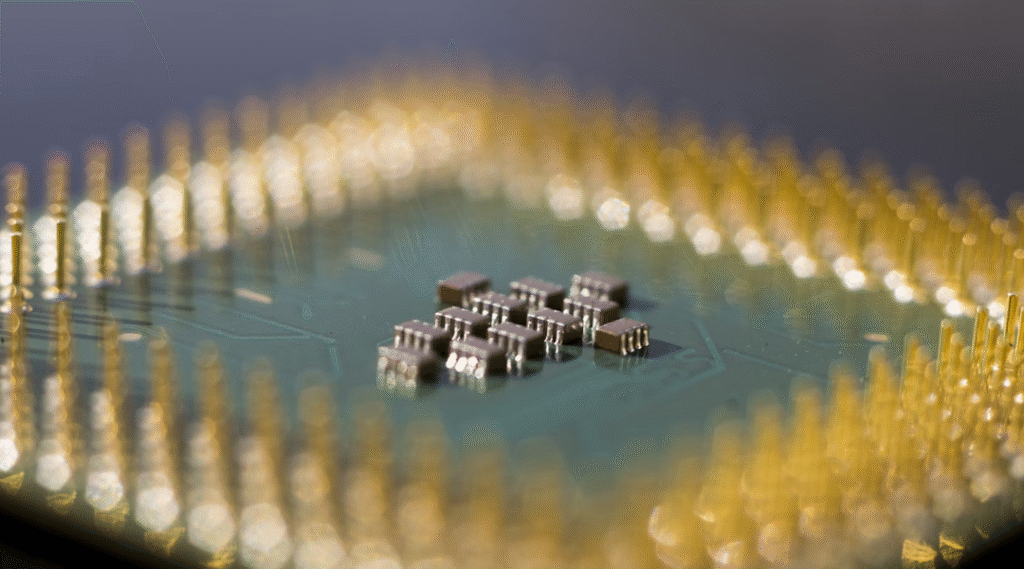In an era where smart terminals and smart cars are advancing in parallel, the design and manufacturing of chips, as the core “brain”, follow completely different logics. Automotive-grade chips and consumer-grade chips, one protects life safety, the other drives digital life, and the two show profound differences in “survival rules” in terms of technical indicators, manufacturing standards, and market structure.
—
1. “Survival Challenge” in Harsh Environments: Reliability is the Lifeline of Automotive Chips
– Extreme environment resistance:
Temperature: Automotive chips need to withstand drastic changes from -40℃ to 150℃ (near the engine compartment), far exceeding the comfort zone of 0℃~70℃ for consumer chips.
Vibration and shock: It has experienced long-term bumps and sudden braking shocks (up to 50G), which is far higher than the standard of accidental drop of the mobile phone.
Humidity and corrosion: To resist corrosion from high humidity, salt spray, oil pollution, etc., consumer chips only need to meet daily environmental requirements.
-Extended service and “zero tolerance” defects:
Lifespan requirements: The design life is generally 15 years+, mileage 500,000 kilometers, and consumer electronic products are usually replaced every 3-5 years.
Failure rate: The automotive-grade PPB (parts per billion) defect rate requirement can be described as “zero tolerance”, while the consumer-grade usually accepts hundreds of PPM (parts per million).
Functional safety (ISO 26262): Must meet the ASIL (Automotive Safety Integrity Level) level (such as the highest level ASIL-D) and have fault detection and redundant backup mechanisms; consumer chips do not have this mandatory requirement.
– Certification barriers: AEC-Q100’s “iron test”:
Automotive chips must pass AEC-Q100 certification, which includes more than 40 rigorous items in seven categories, including accelerated environmental stress testing, life simulation testing, and packaging reliability testing. This process takes 1-2 years and is costly. Consumer chips mainly meet JEDEC standards, which have relatively loose requirements.
—
2. The game between performance and cost: different tracks, different pursuits
-Performance trade-offs:
Process technology: Automotive chips mostly use mature and stable processes (such as 28nm, 40nm) to ensure reliability and cost control; consumer chips (such as mobile phone SoCs) pursue advanced processes (5nm, 3nm) to improve computing power and energy efficiency.
Computing power requirements: The computing power requirements of smart driving chips (such as NVIDIA Orin and Horizon Journey) have increased sharply (hundreds of TOPS), but power consumption and heat dissipation must be taken into account; consumer chips continue to stack CPU/GPU performance.
– Differences in cost structure:
Cost per chip: The cost per chip of automotive-grade chips is significantly higher than that of similar consumer-grade chips due to special materials (such as high-temperature resistant substrates), complex packaging, and extreme testing.
System cost vs. hardware cost: Automobiles are more concerned with system-level reliability and long-term maintenance costs; consumer electronics are extremely sensitive to stand-alone hardware costs.
—
3. Design and supply chain: the difference between a marathon and a sprint
– Design cycle and verification:
It usually takes 5-7 years for automotive chips to go from design to mass production, which involves a large amount of simulation, bench testing, and actual road testing.
Consumer chips follow a “fast-paced” iteration pattern, with a new generation of products usually launched every 18-24 months.
– Supply Chain and Life Cycle:
Long-term commitment: Car manufacturers require chip suppliers to guarantee stable supply for 10-15 years, and production line switching requires strict certification.
Supply chain resilience: Automotive-grade chips emphasize supply chain traceability (such as ISO/TS 16949) and risk resistance, while the consumer electronics supply chain focuses more on agility and cost efficiency.
—
4. Market structure: traditional barriers and emerging shocks
– Traditional kings: NXP, Infineon, Renesas, Texas Instruments (TI), and STMicroelectronics (ST) dominate the traditional ECU market with their deep accumulation.
– The rise of new forces:
Qualcomm: Entering the smart cockpit with Snapdragon cockpit platforms (such as SA8155P/SA8295P) and expanding to autonomous driving (Snapdragon Ride).
NVIDIA: With its GPU advantage, its Orin/Xavier chips have become the benchmark for high-end autonomous driving computing power.
– Consumer giants cross over: MediaTek (MTK), Samsung and others are actively developing cockpit and entry-level ADAS markets with their SoC design capabilities.
According to Strategy Analytics data, the global automotive chip market will exceed US$70 billion in 2023 and is expected to exceed US$150 billion in 2030, with smart cockpit and autonomous driving chips growing the fastest.
—
5. Future Trends: Integration and Evolution
1. Explosion of performance demand: L3+ autonomous driving, cabin-driver integration, and central computing architecture drive the demand for computing power to continue to soar, and advanced processes (such as 5nm) will be more used in automotive chips.
2. Empowerment of “consumer-grade experience: The accumulation of consumer chip giants in AI, image processing, and high-speed interconnection is accelerating their migration to the automotive field, shortening the development cycle.
3. Give equal importance to functional safety and information security: With the popularization of software-defined cars and OTA, chip-level network security (ISO/SAE 21434) has become as important as functional safety.
—
Two parallel and intersecting tracks
Automotive chips and consumer chips, one believes in “safety and reliability” and the other pursues “performance experience”, and have built insurmountable barriers in their respective fields. However, as the automotive electronic and electrical architecture evolves towards centralization, the demand for computing power, AI, and connectivity in smart cockpits and autonomous driving is converging with consumer electronics, and the technical boundaries of the two fields are gradually blurring. The winners of the future will be those explorers who deeply understand the “survival rules” of automotive chips and can efficiently integrate the agile innovation genes of consumer chips.
However, if consumer-grade chips are forcibly applied to automobiles intentionally or unintentionally, it is an extremely irresponsible behavior and practice, which is a taboo and shame in the industry.
More for the topic:
Innovating on the Assembly Line: AI’s Transformative Role in Automotive Development
Driving Into the Golden Years: How AI and Advanced Auto Technologies Support Senior Drivers
7 Automotive Technologies Poised to Revolutionize the Market
Electric Champions Unveiled: A Deep Dive into Which EV Brands Will Reign Supreme
As for in-depth insight articles about AI tech, please visit our AI Tech Category here.
As for in-depth insight articles about Auto Tech, please visit our Auto Tech Category here.
As for in-depth insight articles about Smart IoT, please visit our Smart IoT Category here.
As for in-depth insight articles about Energy, please visit our Energy Category here.
If you want to save time for high-quality reading, please visit our Editors’ Pick here.



